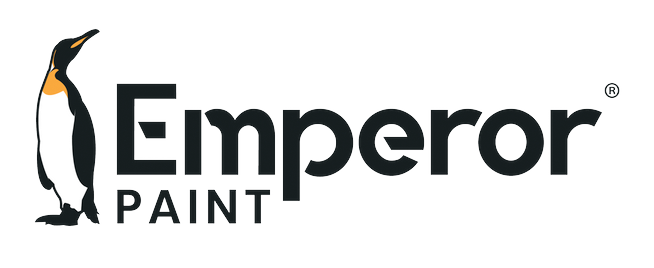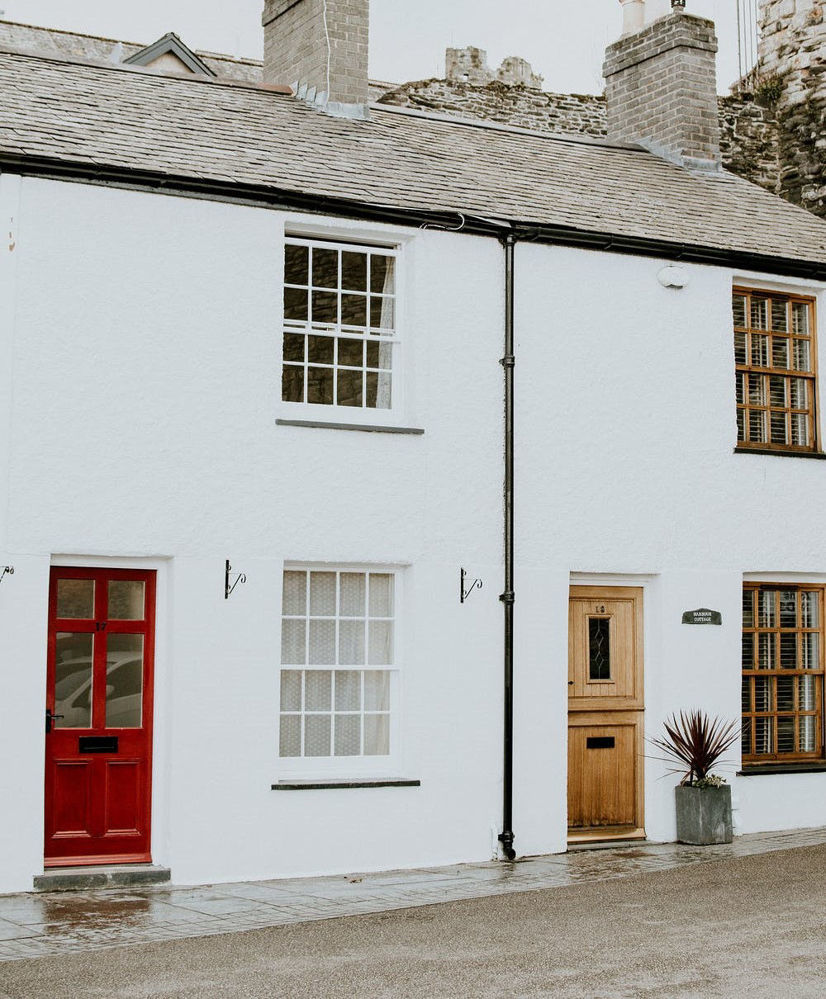
Painting masonry is one of the first jobs on many homeowners summer DIY lists as the warmer weather provides the perfect time to get outside and freshen up your home. Both exterior painted masonry and exposed brickwork are perfect opportunities to add a fresh lick of paint and completely transform the look of your exterior walls. Like all decorating projects, by ensuring the proper preparation is taken and the best tools are used, you will achieve the best possible results. That is why our experts have put together this guide, to make the whole process as straight-forward as possible.
Masonry Paint
The first place to start when painting masonry is with that paint you will be using. Not all paint is suitable for use on exterior surfaces due to the weathering they have to cope with, which is why many paint manufacturers develop dedicated exterior paints to be used outside. The paints designed for exterior walls are called masonry paints, offering the adhesion and weatherproof abilities that help them remain intact even with the wind and rain that exterior walls endure. Masonry paints are often:
- Thicker than interior paints to allow better coverage on the larger masonry surfaces they are used on
- Designed to be more flexible in order to allow for the contraction that occurs under some weather conditions
- Provide added durability to ensure they remain adhered to the wall under harsh conditions
- Offer varying levels of water resistance
- Offer UV protection to help prevent fading and discolouration
Masonry paints, as with all paints, vary in a number of ways which means picking the right one for you is the very first step in the decorating process. The four main factors that need to be considered when deciding which masonry paint to use are:
- Colour
- Water Resistance
- Durability
- Texture
Firstly, the colour you are opting for will have a factor on which paint you should use. Most masonry paint manufacturers offer a range of popular masonry colours as standard, such as white, cream & grey.
When it comes to water resistance and durability, these two crucial factors go hand-in-hand. The reality is masonry paints are designed to match different needs. Some masonry paints are designed to perform for 1-3 years and are available at a low-price at large DIY shops around the UK. On the other hand, there are specialist masonry paints that can last in excess of 20 years due to their advanced technology.
You may be asking, how do these paints last much longer than cheap masonry paints? Well, this is where water resistance comes in. The single biggest cause of exterior paint failure is moisture. It is a relatively unknown fact amongst homeowners, but bricks actually absorb moisture due to them being porous. When moisture from rain soaking into the wall and moisture from the interior walls accumulate underneath the film of the paint, this causes it to peel completely off the wall.
This is why some masonry paints offer waterproof abilities, such as Emperor Masonry Paint. By creating a super hydrophobic (ultra water-repellent) surface on the exterior wall, water simply rolls straight off the painted masonry, not allowing it to soak into the wall and get behind the paint film. This, thanks to the masonry paint remaining completely breathable, means that moisture is completely prevented from causing damage to the paint. This super-hydrophobic nano-technology has been scientifically proven to withstand harsh weather conditions without peeling, flaking or changing in any way for a minimum of 25 years. It is important to note that while almost all masonry paints claim to be weatherproof, this does not mean they are waterproof. To be completely waterproof and be able to prevent water from causing damage to paint, it must be water-resistant and breathable.
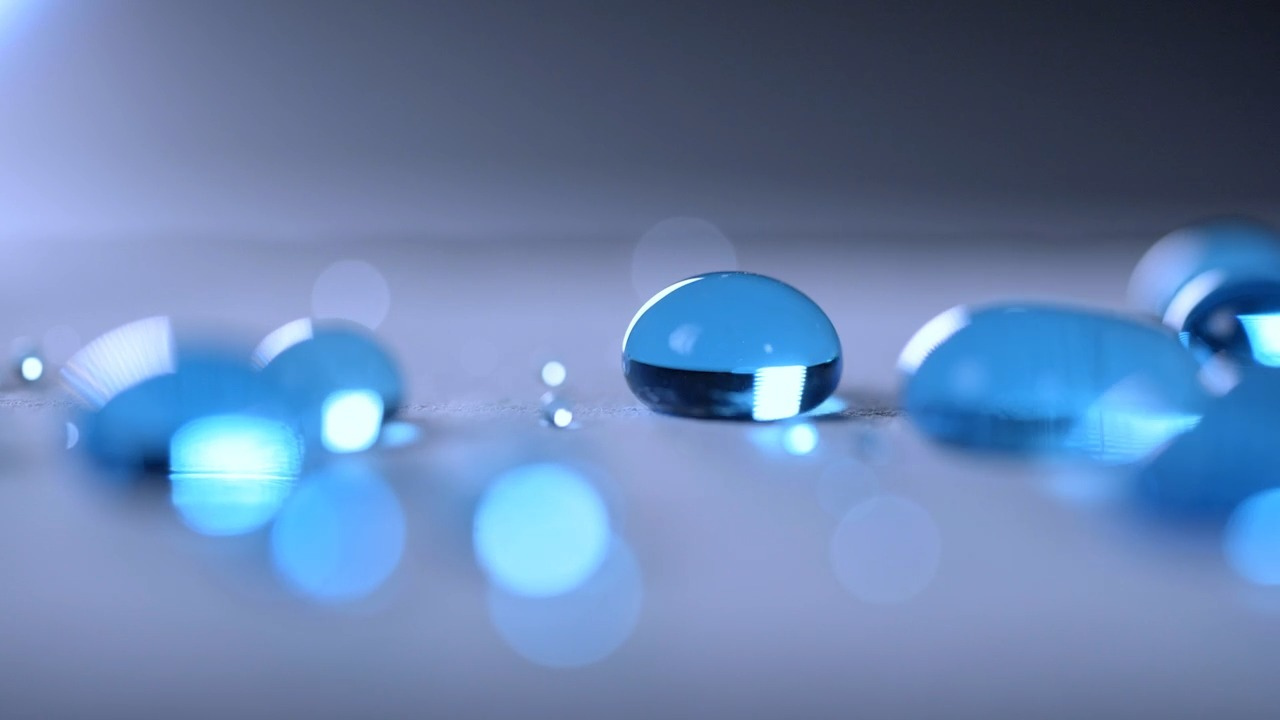
The last way that masonry paint differs is by texture with smooth and textured masonry paints available. While a smooth masonry paint is by far the most popular option as it creates a silky smooth finish that is easy to clean, textured masonry paint is lightly textured, allowing it to cover any small wall blemishes and offering more weather resistance compared to a standard, non-waterproof masonry paint.
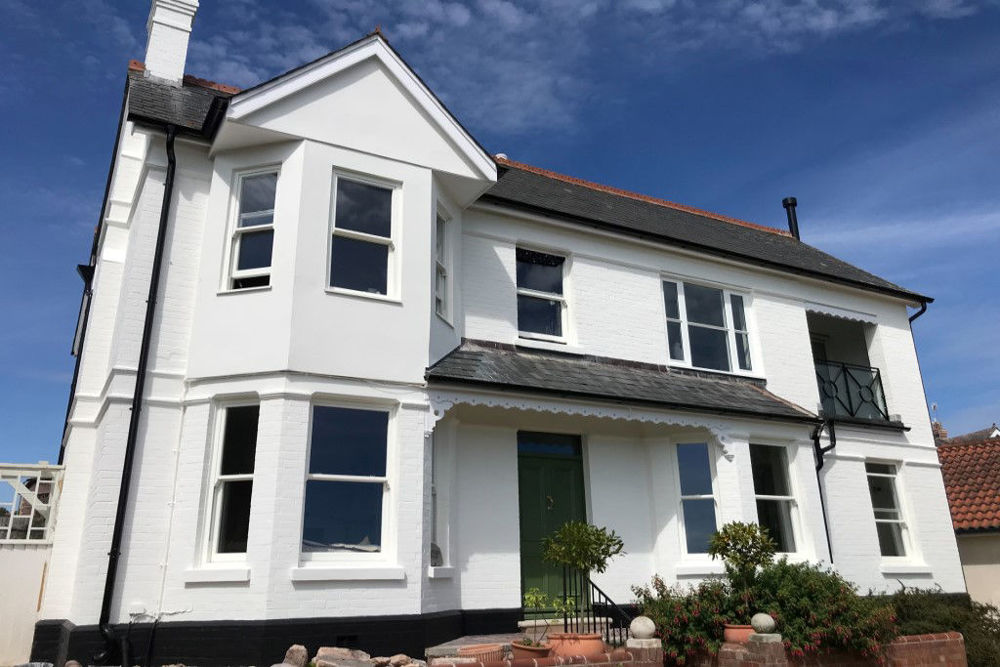
How Much Paint Do I Need?
Once you have decided what masonry paint you are going to use, the next step is estimating how much paint you will need to complete your project. This is not an easy task especially if you do not have previous experience with exterior masonry painting. It is crucial that you ensure you have enough paint to complete the project as having to re-order more paint half-way through the project will not only mean you lose time but could also mean you will have an uneven finish due to varying drying times of the paint.
There are three things you must consider when estimating the amount of paint you will need when painting masonry:
- The size of the area you will be painting
- The coverage of the paint you are using
- The number of coats required
By considering these three factors, you will be able to correctly estimate exactly how much paint you will need.
Firstly, let's cover how to estimate the size of the area you will be painting. This is done in square metres by measuring the length of the area and the height of the area. Once you have these two measurements, simply times them together to find the total square metres. If you are painting just part of the house or an garden wall for example, this is straight forward. If you are painting the full house you must then times this number by the number of walls you are painting. You can get a more accurate total by establishing what parts of the property you are not planning to paint, such as windows and doors and taking these from your total.
The coverage of masonry paint varies from paint to paint. Emperor Masonry Paint for example has a coverage 5-6m² per litre. On rough exterior walls such as pebbledash, the coverage of the paint could be half of what it is on a smooth masonry surface, giving you 3m² per litre with Emperor Masonry Paint.
The final part of the equation is the number of coats a masonry paint will require can vary. The vast majority of masonry paints are two-coat systems, meaning it is important to double the coverage you will need in order to account for you painting the masonry twice.
If you require any help estimating the amount of paint you will require, feel free to get in touch with one of our experts by emailing info@emperorpaint.co.uk.
How To Paint Masonry
Now you have your paint sorted, it is time to start the decorating process. Here is our experts step-by-step guide to painting masonry from start to finish.
To paint masonry you will need:
- Masonry roller (long-pile roller)
- Paint tray or scuttle
- Paint brush
- Dust brush
- 120 grit sandpaper
- Dust sheets
- Window film
- Masking tape
- Masonry paint
- Exterior filler & filling knife (may be required)
- Scraper (may be required)
1. PREPARATION
Preparation is one of the most important parts of the decorating process, as any professional decorator will tell you. If you do not ensure the surface is ready to paint, you will experience problems with the paint adhering either during the painting or after a matter of weeks the paint will begin to fail. Exterior walls are very rarely ready to be painted straight away due to dirt, cracks or peeling paint.
The very first part of the process for preparing masonry to be painted is to fill any cracks or holes in the masonry. Start by removing any loose mortar and rubble from the hole or crack before filling. Using a good exterior filler such as the Toupret Masonry Repair Filler, fill the masonry by working the filler back and forth into hole or crack. It is a good idea to overfill the hole to ensure that you compensate for shrinkage. If you have overfilled, sand this back using a 120-grit sandpaper to get a perfectly smooth surface ready to paint. On any areas where paint is peeling, remove this using a scraper. If the scraper doesn't work use a stiff-bristled brush.
Once the surface is properly filled and sound, it must be cleaned before painting masonry. This is a crucial step as any fungus left on the wall will sprout and cause the paint to fail. On any areas that show mould or green growth, apply a fungicidal masonry cleaner such as Emperor Masonry Cleaner using a brush. Allow it to dry and be absorbed into the surface of the masonry for a minimum of 2 hours. It is not necessary to wash this off as you will be painting over the top of it and therefore will not see the residue left by the cleaner. Further to this, remove any dirt and debris from the wall using a stiff brush as this can also prevent the paint from properly adhering to the masonry.
The final part of the preparation process is to cover any surfaces that you do not want to paint in order to achieve the cleanest possible finish. Apply masking tape along any the edges of the masonry and your exterior trim such as doors and windows. It is also recommended to put down dust sheets to reduce the risk of paint splashing on to other surfaces.
2. PRIMING
If you are painting a bare masonry wall that has never been painted before, you must prime it like most other bare surfaces before painting. If you are simply refreshing previously painted masonry, this step is not required.
When using Emperor Paint, you must use the Emperor Paint Primer as this is also water repellent, ensuring full waterproof protection. Masonry primer is a thin, milky substance that can be easily applied using either a masonry roller or a paint brush. It requires just one-coat of application and must be applied in completely dry conditions. If conditions are not dry, do not attempt to continue with the painting process as the primer or masonry paint will not adhere. Apply a thin, even layer of the primer to the masonry, ensuring you cover the full surface. Once you have fully primed the area, leave it to dry completely for 3-5 hours before painting.
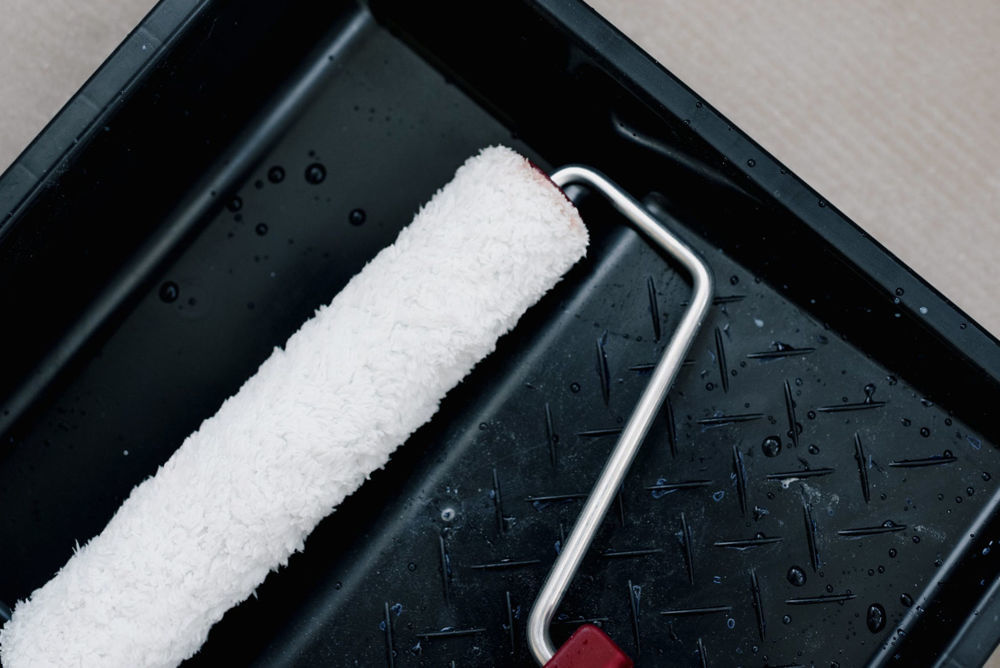
3. PAINTING
Now the important part, the painting of the masonry! Ensure you are not painting in conditions below 5°C as this will affect the performance of the masonry paint. Starting from the top of the masonry, use a paint brush to cut in around the edges first as these can then be rolled over with a roller to create an even finish. Once this is done, use your long-pile masonry roller to apply a thin but even first coat of paint. The aim of this first coat is not create a solid colour finish but to build an undercoat that will help the thicker topcoat adhere. Once you have finish your first coat, leave to completely dry as per the manufacturers instructions. In the case of Emperor Masonry Paint this is around 8 hours in warm temperatures. Apply the second coat slightly thicker but once again as evenly as possible to the masonry, taking care to ensure you get the best possible finish.
The last coat of paint can then be left to completely dry before you remove your masking tape and admire your handy work!
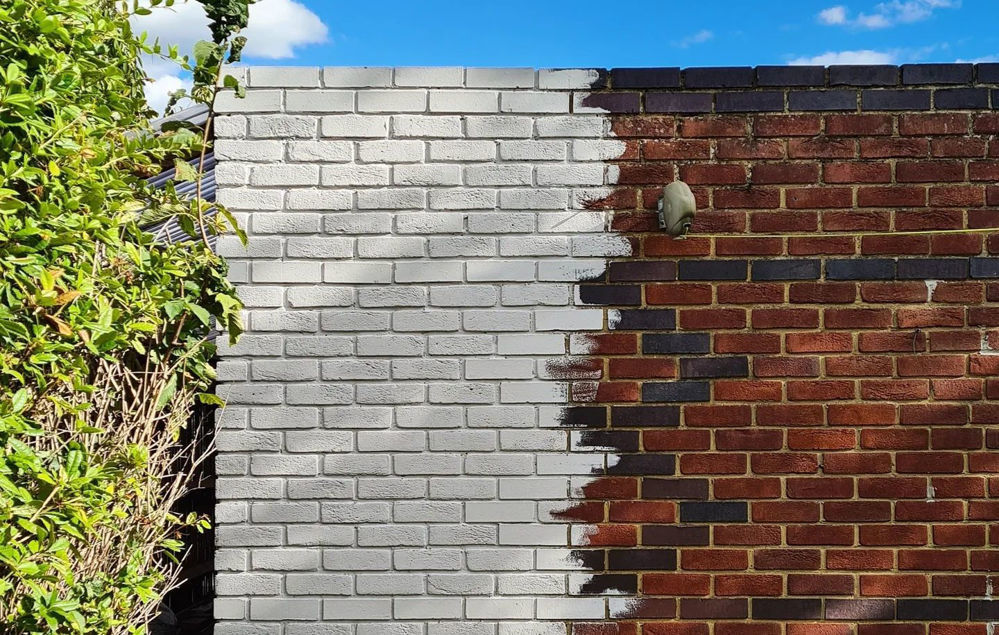
Frequently Asked Questions
Q. WHAT IS SPECIAL ABOUT MASONRY PAINT?
Masonry paint requires more durability and water resistance to cope with the higher demands of exterior masonry. That is why you cannot use any emulsion paint on exterior walls as it will simply peel straight off with rain.
Q. CAN YOU PAINT PAVING SLABS WITH MASONRY PAINT?
Some masonry paints will adhere to concrete slabs as they are made of the same material as some masonry surfaces. Having said this, just because the surface is the same does not mean it will perform the same. A paving slab is a horizontal surface, meaning water will pool on the top of it rather than wash off like an exterior wall. This means that the masonry paint will not perform for as long as it would on a wall. Furthermore, a water repellent masonry paint will not be suitable for paving slabs as these are designed for exterior walls.
Q. CAN YOU PAINT DAMP MASONRY?
Surfaces must be completely dry before painting, especially with a water-based paint like the vast majority of masonry paints are. You should not paint a damp exterior wall until you have resolved the issue that is causing the moisture. This is usually due to penetrating damp, which is caused by water ingress on an exterior wall. By waterproofing masonry using a waterproof masonry paint this moisture will be prevented. Wait until the temperatures rise and the wall has a chance to dry out and paint the masonry while it is dry. Alternative causes of moisture could be a water leak or a crack in the exterior wall.
Q. WHAT IS THE BEST MASONRY ROLLER?
Paint rollers come in a range of sizes and sleeve thickness, which is known as pile or nap. For painting a rough exterior such as masonry, it is crucial that you use long-pile roller, which often have a nap of 3/4" or 1" thickness. This thicker roller sleeve allows more paint to be picked up, which can then be deposited on the masonry in order to achieve a good coverage over larger areas. These rollers also vary in roller size, from 4" mini-rollers to 15" large rollers. We would recommend using a roller of 9" or larger in order to get a good coverage over an exterior wall. Using an extension pole will also allow you to apply masonry paint as easily as possible without putting strain on your body.
Q. DOES MASONRY PAINT STOP DAMP?
There are two main types of damp; penetrating damp & rising damp. Rising damp comes from moisture soaking from the ground and rising up the exterior wall. With penetrating damp water is absorbed through the masonry which is then transferred into the property. By preventing this moisture from absorbing into the exterior wall, damp problems can be significantly reduced. Not all masonry paints are water repellent, which is essential for penetrating damp prevention.
Q. WHAT SELF-CLEANING MASONRY PAINT?
Self-cleaning masonry paint is masonry paint that does not require regular cleaning as any dirt cannot attach itself or is washed off with rainwater. This happens when a water repellent masonry paint such as Emperor Masonry Paint is used where dirt is treated the same way as water. This means that the masonry will not be required to be cleaned for decades to come, helping it stay looking like new.
Q. WHAT IS BREATHABILITY AND HOW DOES IT WORK?
A term that many people are confused with is 'breathability' when it comes to masonry paint. Bare, untreated masonry is both porous (meaning it absorbs moisture) and breathable (meaning it allows water vapour to travel freely). This breathability is crucial for ensuring that the interior of the property can release moisture that naturally builds up from condensation. This means that while preventing moisture entering the building is crucial, allowing moisture to release from the building is even more important, as if it is blocked it will cause significant damage to the building materials and leads to huge damp problems. This is why any masonry paint must be breathable to allow this moisture to escape. Breathability is measured with an SD value, with anything under 1 being considered breathable. In independent tests, an untreated wall was measured at 0.57 while the same wall that was painted with Emperor Masonry Paint was measured at 0.56. This demonstrated that Emperor Masonry Paint remained completely breathable, while it showed it reduced water absorption by 93.4%. This combination of water resistance and breathability is what keeps homes free from penetrating damp, heat loss and paint failure.
Q. CAN YOU SPRAY MASONRY WITH MASONRY PAINT?
Yes, you can use a spray machine in order to apply masonry paint. This leaves a smoother finish and can allow you to cover large areas quickly & effectively. It is recommended that you only take this route if you are experienced with spray painting, especially as spray machines are quite costly.
Want more information regarding painting masonry? Our in-house experts are on hand to answer any questions you may have about the full painting process. Contact one of our experts or shop our waterproof masonry paint.

